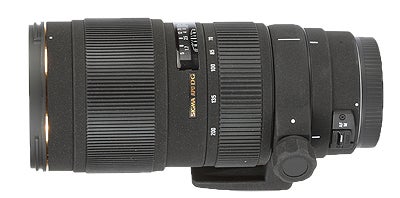Sigma APO 70-200mm f/2.8 II EX DG HSM Macro Review
Sigma APO 70-200mm f/2.8 II EX DG HSM Macro Review
Sigma APO 70-200mm f/2.8 II EX DG HSM Macro lens review - how does Sigma's offering stand up against the competition? The What Digital Camera Sigma APO 70-200mm test investigates...

Verdict
Pros
- Bargain price for Apo specification.
Cons
- Handling doesn’t have perfect “feel”.
Key Specifications
- Review Price: £650
Sigma’s apochromatic label suggests that great things can be expected from the Sigma APO 70-200mm f/2.8 II EX DG HSM Macro – but, although its optical results show impressive peaks, the figures are not significantly better overall than those of the zoom’s non-apochromatic rivals.
Wide-open performance at 70mm is noticeably weak but this may not be too much of a problem given that the lens is likely to be complemented with a smaller and lighter 24-70mm zoom that will be the more sensible choice for 70mm work. Peak resolution is achieved between f/5.6 and f/11, when the MTF figures are comfortably above 0.3 cycles-per-pixel for all focal-length settings. Beyond f/16 the MTF figures drop-off and it is to Sigma’s credit that, like Nikon, it resists the temptation to add an f/32 setting just for the sake of it.

In terms of handling this lens is a bit of a mixed bag. The rearward zoom ring is a touch on the stiff side and also verges on being a shade too narrow. The zoom ring is much better although it still lacks the silkiness that some users might want of a staple lens. In addition, there can be a bit of overshoot when AF mode is selected, resulting in slower focusing than would otherwise be the case.
More positively, Sigma has provided both a depth-of-field scale (for the 70mm setting) and an extended close-focusing range, although this is not a true macro capability despite the zoom’s ‘macro’ label.
When it comes to prolonged use the Sigma doesn’t feel truly comfortable. The fact that it has Nikon-twist focusing may irk some Canon users but it is possible that the root of the problem is to be found in the texture of the grip on the two collars, which fails to provide the expected level of user-interaction.
There is no image-stabilisation built into this lens but, as usual, Sigma includes a robust carrying-case and the overall offering is both very capable and competitively priced. For some camera systems, Sigma’s are the only independent lenses available and in those instances this will be a particularly attractive alternative to the camera-brand’s own zoom.
Trusted Score
Score in detail
-
Value 10
-
Design 9
-
Image Quality 10
-
Features 9

